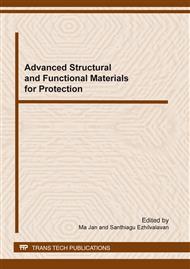p.106
p.109
p.113
p.116
p.119
p.122
p.126
p.129
p.133
The Effect of Specimen Geometry on the Mechanical Behavior of Trabecular Bone Specimens
Abstract:
The effect of specimen geometry on the mechanical behaviour of wet porcine trabecular bone specimens was studied by destructive uniaxial compression using cylindrical and cuboid specimens with different aspect ratios (1:1, 2:1 and 3:1) but keeping the cross sectional area constant. The coefficients of determination in the resulting modulus-density and strength-density regressions (p<0.05) and the standard error of regressions were compared between the specimens. Comparing cylinder specimens, coefficients of determination for both modulus-density and strength-density regressions were highest and standard error of regressions were lowest for the 2:1 cylinders (R2 = 0.50, S.E=76MPa, modulus; R2 = 0.66, S.E=1.63MPa, strength). Comparing cuboid specimens, coefficients of determination for both modulus-density and strength-density regressions were highest for the cubes (R2 = 0.46, modulus; R2 = 0.36, strength). Comparison between 2:1 cylinders and cubes, there was no significant difference in their coefficient of determination for both modulus-density regression (p>0.05) and strength-density regression (p>0.05). However 2:1 cylinders is still a more preferred geometry for compressive testing as it achieved a moderate correlation (0.50 R² < 0.75) for both modulus-density regression and strength-density regression compared to cube which showed a weak relationship (R2<0.5) for both modulus-density regression and strength-density regression.
Info:
Periodical:
Pages:
129-132
Citation:
Online since:
February 2012
Authors:
Price:
Сopyright:
© 2012 Trans Tech Publications Ltd. All Rights Reserved
Share:
Citation:


